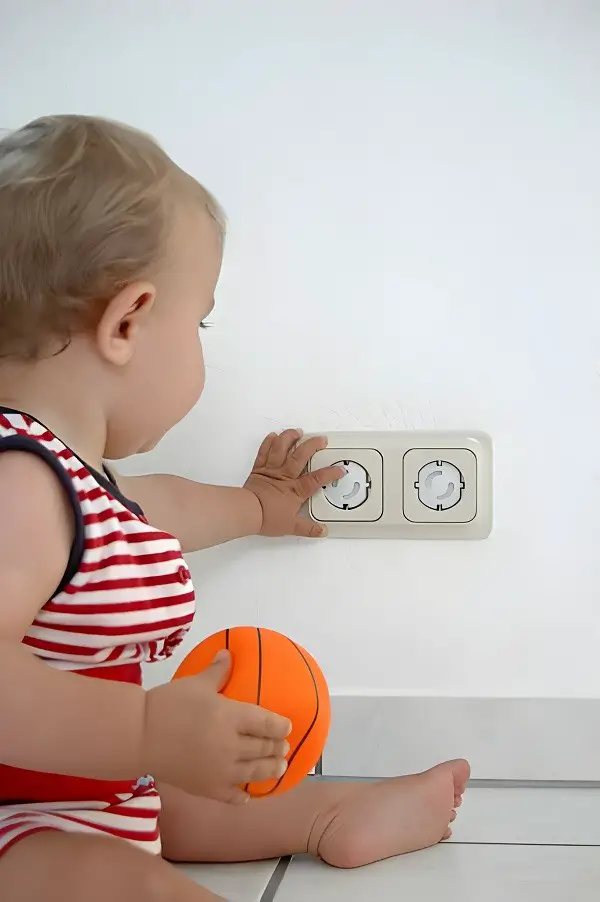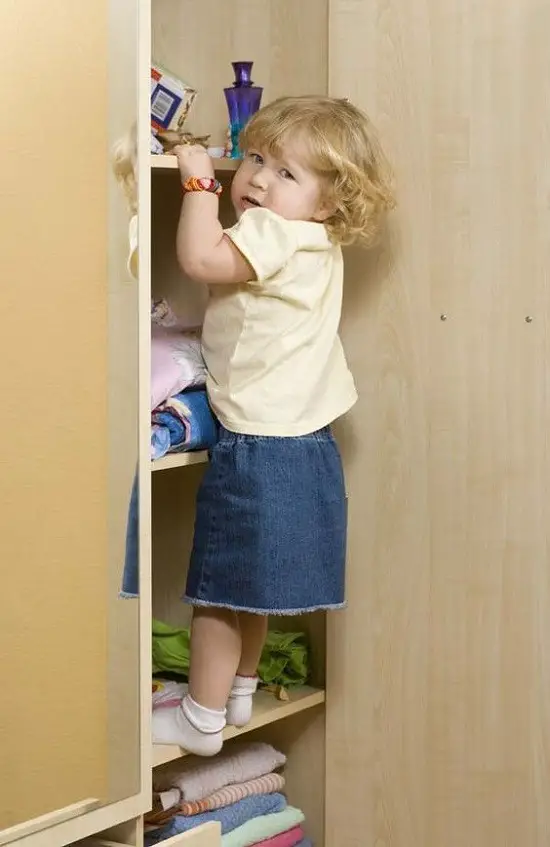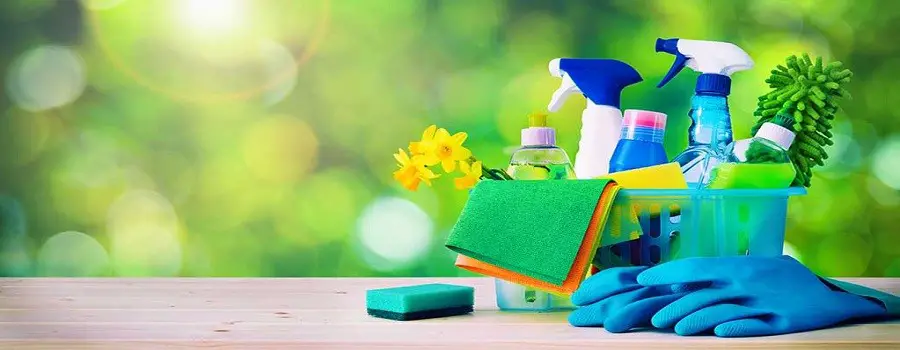Last Updated on January 6, 2025
Childproofing your home is essential for keeping your kids safe. These tips will help you create a secure environment for your little ones.
The safety of children is a top priority for parents, and one of the most important aspects of this is childproofing the home. It’s crucial to take proactive measures to minimize potential hazards and create a safe environment for kids to explore.
By implementing practical strategies and safety equipment, you can significantly reduce the risk of accidents and injuries. We’ll explore essential tips for childproofing your home, covering key areas such as the kitchen, living room, bathroom, and bedrooms. With the right approach, you can create a safe and secure space for your children to thrive, giving you peace of mind as a parent.
Importance Of Childproofing

Childproofing your home is a crucial step in creating a safe environment for your little ones to explore and learn. Children are naturally curious and adventurous, which can lead them into potentially dangerous situations. Implementing proper childproofing measures helps to minimize the risk of accidents and injuries, giving you peace of mind as a parent.
Prevent Accidents
Childproofing your home encompasses various measures that help minimize the risk of accidents and injuries for young children. This includes securing hazardous items, such as cleaning supplies and medications, using safety gates to prevent access to stairs, and installing outlet covers and cord management devices to reduce the risk of electrical accidents. By taking proactive steps to make your home safer for children, you can significantly reduce the potential for accidents and injuries.
Peace Of Mind
Childproofing your home provides parents with a sense of security and peace of mind knowing that potential dangers have been minimized. By creating a safe environment for children to explore and play, you can relax knowing that your child is less likely to encounter hazardous situations. This allows for a more relaxed and enjoyable parenting experience, knowing that your child is protected within the confines of a carefully childproofed home.
Identifying Potential Hazards
Keep your little ones safe by identifying potential hazards in your home. Check for sharp corners, choking hazards, and secure furniture to prevent accidents. Prioritize safety measures to childproof effectively and ensure a secure environment.
Keeping your home safe for your little ones is of utmost importance. Identifying potential hazards is the first step towards creating a child-friendly environment. Let’s take a closer look at three key areas in your home and the hazards to be aware of.
Kitchen
The kitchen is filled with potential dangers for curious children. Ensure that all cleaning products, sharp objects, and small kitchen appliances are stored out of reach. Installing stove knob covers and cabinet locks can prevent accidental burns and access to harmful items. Additionally, securing appliance cords and keeping hot foods and liquids away from table edges can help to mitigate risks.
Living Room
In the living room, it’s important to secure heavy furniture and electronics to prevent accidents such as tipping or pulling items down. Covering electrical outlets and securing cords will reduce the risk of electrical hazards. Similar to the kitchen, utilizing furniture edge and corner guards can help to soften potential impact points for inquisitive children.
Bathroom
In the bathroom, it’s crucial to keep medicines, cleaning products, and personal care items out of reach. Installing non-slip mats in the bathtub and shower will help to prevent slips and falls. Adjusting the water heater to a safe temperature can minimize the risk of scalding, and installing toilet seat locks can prevent accidental drowning.
Identifying potential hazards in these key areas of your home is crucial for creating a safe environment for your children. By mitigating these risks, you can provide a secure space for your little ones to learn and grow.
Essential Childproofing Products
Childproofing your home is crucial for your little one’s safety. Essential products like safety gates, outlet covers, and cabinet locks can prevent accidents and injuries. Investing in these items helps create a secure environment for your child to explore and play without risks.
Child safety is a top priority for every parent. Essential childproofing products like safety gates, outlet covers, and cabinet locks are crucial for creating a safe environment for your little ones. Safety gates help prevent access to hazardous areas. Outlet covers protect curious children from electrical outlets. Cabinet locks keep harmful items out of reach.
When it comes to childproofing your home, safety gates are indispensable. These gates create barriers to stairs or rooms with potential dangers. Outlet covers are vital for covering electrical outlets and preventing children from sticking objects inside. Cabinet locks secure cabinets containing hazardous items like cleaning supplies.
Properly installed safety gates offer peace of mind by restricting access to stairs and rooms. Childproof outlet covers safeguard against electrical hazards. Secure cabinet locks prevent children from accessing harmful substances. It’s crucial to invest in these childproofing essentials to protect your little ones from accidents.
Safety Gates:
Install at staircases and doorways.
Choose gates that meet safety standards.
Outlet Covers:
Cover all accessible electrical outlets.
Opt for child-resistant outlet covers.
Cabinet Locks:
Secure cabinets with cleaning supplies.
Use magnetic or adhesive locks for easy installation.
Childproofing products like safety gates, outlet covers, and cabinet locks are indispensable for a safe and protected home environment for your children.
Creating A Safe Nursery
Creating a safe nursery is of utmost importance when childproofing your home. As newborns spend a significant amount of time in their nursery, taking precautions to ensure their safety is essential. There are three key areas to focus on when childproofing a nursery: crib safety, blind cord safety, and general nursery safety.
Crib Safety
One of the most important aspects of creating a safe nursery is ensuring crib safety. Follow these guidelines to make sure your baby’s crib is a secure and comfortable place for them to sleep:
- Choose a crib that meets the current safety standards set by the Consumer Product Safety Commission (CPSC).
- Ensure the crib mattress fits snugly against all sides of the crib to prevent any gaps where your baby could get stuck.
- Remove all soft bedding, including pillows, blankets, and stuffed animals from the crib. These items can pose a suffocation hazard for infants.
- Keep the crib away from windows, blinds, and curtains to prevent your baby from reaching cords or potentially pulling down window coverings.
- Regularly inspect the crib for any loose or broken parts. Repair or replace them immediately to maintain a safe sleeping environment for your baby.
Blind Cord Safety
Another crucial aspect of childproofing your nursery is ensuring blind cord safety. Blind cords can pose a strangulation risk for young children. Protect your baby from this danger with these simple steps:
- Install cordless window coverings or use cord wraps to keep blind cords out of your child’s reach.
- Anchor and secure longer cords to the wall or floor to minimize the risk of entanglement.
- Regularly inspect the blind cords for any signs of wear or damage, and replace them if necessary.
General Nursery Safety
In addition to specific cribs and blind cord safety measures, there are general safety tips to consider when childproofing your nursery. Here are some essential precautions to take:
- Place electrical outlets or power strips behind furniture or cover them with outlet covers to prevent your child from accessing them.
- Secure heavy furniture, such as dressers and bookshelves, to the wall to prevent tipping.
- Keep small objects, cleaning supplies, and medications out of your child’s reach by using locks on drawers and cabinets.
- Ensure that the temperature and humidity in the nursery are comfortable for your baby. Use a thermometer and a humidifier if necessary.
Childproofing For Different Age Groups

Childproofing for different age groups is essential to ensure a safe home environment. For infants, focus on securing cabinets and outlets, while toddlers require gating stairs and securing furniture. For preschoolers, consider safety locks and teaching them how to use emergency numbers.
As children grow, constantly reassess and adapt your childproofing measures accordingly.
Childproofing your home is essential to create a safe environment for your little ones. However, the dangers they face change as they grow. From infants to toddlers and preschoolers, each age group presents unique challenges. By understanding the specific risks associated with each stage, you can implement measures to keep your child safe. Let’s explore childproofing tips for infants, toddlers, and preschoolers.
Infants
During the infant stage, babies are curious and exploring their surroundings. It’s crucial to take extra precautions to prevent accidents. Here are some childproofing tips for infants:
Sleeping area safety
- Place your baby to sleep on their back in a well-fitted crib mattress free from pillows, blankets, stuffed toys, and bumpers.
- Install safety gates at the entrance of the nursery to prevent wandering and access to potential hazards.
Baby gear security
- Secure furniture and large electronics to the wall to prevent tipping.
- Use safety straps to secure your baby in high chairs, strollers, and changing tables.
Electrical safety
- Cover electrical outlets with safety plugs or outlet covers to prevent accidental shocks.
- Keep cords and wires out of reach or tuck them away, so your baby cannot pull on them.
Toddlers
As toddlers gain mobility and independence, they become more curious and adventurous. Childproofing tips for toddlers include the following:
Cabinet and drawer locks
- Install cabinet locks to prevent access to cleaning products, medications, sharp objects, and other potentially dangerous items.
- Use drawer locks to prevent drawer-related accidents.
Staircase safety
- Install stair gates or barriers at the top and bottom of staircases to prevent falls.
- Use non-slip mats or adhesive strips to enhance traction on stairs.
Window safety
- Install window locks or window guards to prevent accidental falls.
- Keep furniture or any climbable objects away from windows to discourage climbing.
Preschoolers
Preschoolers are active, curious, and constantly exploring their environment. To ensure their safety, consider the following childproofing tips:
Heavy furniture safety
- Secure heavy furniture to the wall to prevent tipping or falling.
- Ensure shelves are securely mounted and not overloaded.
Cord safety
- Keep blind cords and curtain cords out of reach or use cord shorteners to avoid strangulation hazards.
- Tie up loose cords from appliances and electronics.
Kitchen safety
- Install stove guards to prevent burns and scalds.
- Use knob covers to prevent your child from turning on the stove or oven.
Remember, childproofing your home is an ongoing process. As your child grows, make sure to reassess and update your childproofing strategies to address new risks. By taking these essential precautions, you can provide a safe and secure environment for your little ones to grow and explore.
Frequently Asked Questions
Q: How Can I Make My Home Safe For My Child?
A: Ensure the safety of your child by securing furniture, installing safety gates, and using outlet covers.
Q: What Are Some Common Household Hazards For Children?
A: Look out for potential hazards like loose cords, sharp corners, toxic substances, and unsecured furniture.
Q: How Do I Secure Cabinets And Drawers To Protect My Child?
A: Use childproof locks or cabinet latches to keep cabinets and drawers inaccessible to your child.
Q: What Should I Do To Prevent Falls And Trips?
A: Secure staircases with safety gates, use nonslip bath mats, and keep floors clear of clutter to prevent accidents.
Q: How Can I Prevent Electrical Accidents In My Home?
A: Cover electrical outlets with outlet covers and use cord shorteners to prevent electrical accidents and shocks.
Conclusion
Your child’s safety at home is non-negotiable. By implementing these essential childproofing tips, you can create a secure environment that fosters peace of mind for both you and your little one. Remember, safeguarding your home is an ongoing process that requires attention to detail and a vigilant eye for potential risks.
Prioritize safety always.








